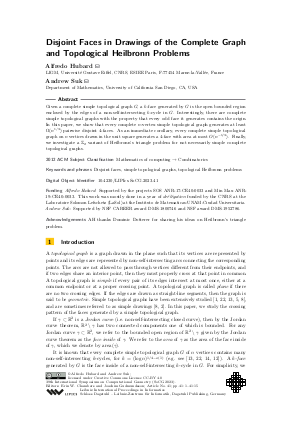LIPIcs.SoCG.2023.41.pdf
- Filesize: 0.92 MB
- 15 pages

 Creative Commons Attribution 4.0 International license
Creative Commons Attribution 4.0 International license






















Feedback for Dagstuhl Publishing